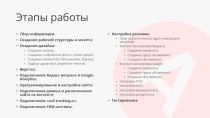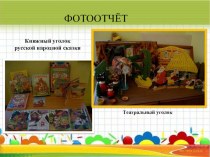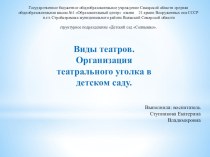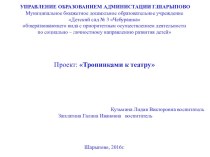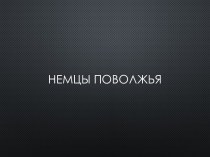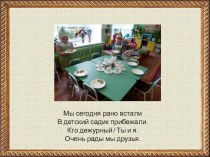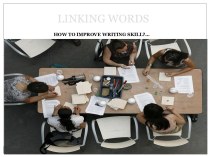- Главная
- Разное
- Бизнес и предпринимательство
- Образование
- Развлечения
- Государство
- Спорт
- Графика
- Культурология
- Еда и кулинария
- Лингвистика
- Религиоведение
- Черчение
- Физкультура
- ИЗО
- Психология
- Социология
- Английский язык
- Астрономия
- Алгебра
- Биология
- География
- Геометрия
- Детские презентации
- Информатика
- История
- Литература
- Маркетинг
- Математика
- Медицина
- Менеджмент
- Музыка
- МХК
- Немецкий язык
- ОБЖ
- Обществознание
- Окружающий мир
- Педагогика
- Русский язык
- Технология
- Физика
- Философия
- Химия
- Шаблоны, картинки для презентаций
- Экология
- Экономика
- Юриспруденция
Что такое findslide.org?
FindSlide.org - это сайт презентаций, докладов, шаблонов в формате PowerPoint.
Обратная связь
Email: Нажмите что бы посмотреть
Презентация на тему Ukraine
Содержание
- 2. UkraineUkraine is situated in the south-eastern part
- 3. UkraineThe territory of Ukraine is mostly a
- 4. The climate The climate of the country
- 5. The Ukrainian language
- 6. The Ukrainian languageThe Ukrainian language traces its
- 7. Ukrainian is written in a version of
- 8. The culture
- 9. PysankyThe tradition of the Easter egg, known
- 10. LiteratureThe history of Ukrainian literature dates back
- 11. The Literaturehe 19th century initiated a vernacular
- 12. Ukrainian cuisineThe traditional Ukrainian diet includes chicken,
- 13. Скачать презентацию
- 14. Похожие презентации
UkraineUkraine is situated in the south-eastern part of Central Europe and has its own territory, government, national emblem, flag and anthem. It borders on Russia, Byelorussia, Moldova, Slovakia, Rumania, Hungary and Poland on land and Russia,








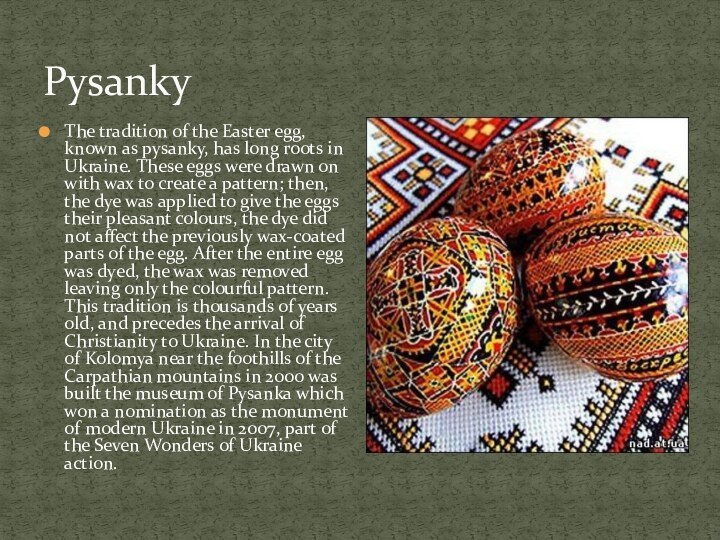



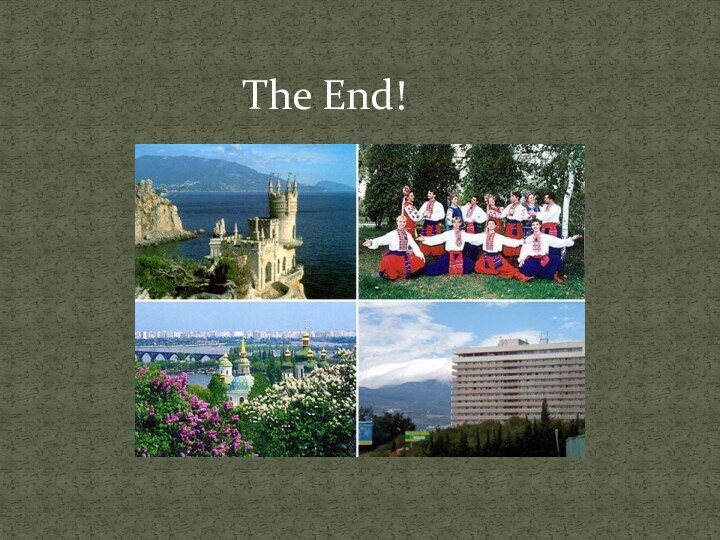
Слайд 3
Ukraine
The territory of Ukraine is mostly a level,
treeless plain, calls "steppe". There are the Crimean Mountains
in the Crimean peninsula and the Carpathians in the west, but they are not very high. Mixed forests of pine and fir-trees, beeches, limes, oaks and elms cover the mountains, but the thickest woods can still be found in the northern part of the republic, in Volyn. The main Ukrainian river is the Dnieper. It is one of the longest European rivers and one of the republic's main source of hydroelectric power.
Слайд 4
The climate
The climate of the country is
moderate. Winter is rather mild, with no severe frosts
but with regular snowfalls everywhere except the south. The rivers and lakes freeze in winter. The average winter temperature varies -20 Centigrade in the north to -3-5 in the south. Summer is quite hot and dry, with occasional showers and thunderstorms. The fertile black soil is well watered in spring and autumn and gets plenty of sunshine in summer.
Слайд 6
The Ukrainian language
The Ukrainian language traces its origins
to the Old East Slavic of the early medieval
state of Kievan Rus'. Ukrainian is a lineal descendant of the colloquial language used in Kievan Rus' (10th–13th century) from 1804 until the Russian Revolution Ukrainian was banned from schools in the Russian Empire of which Ukraine was a part at the time. It has always maintained a sufficient base among the Ukrainian people (especially in Western Ukraine where the language was never banned in its folklore songs, itinerant musicians, and prominent authors.
Слайд 7
Ukrainian is written in a version of the
Cyrillic alphabet, consisting of 33 letters an apostrophe is
also used.The modern Ukrainian alphabet is the result of a number of proposed alphabetic reforms from the 19th and early 20th centuries, in Ukraine under the Russian Empire, in Austrian Galicia, and later in Soviet Ukraine. A unified Ukrainian alphabet was officially established at a 1927 international Orthographic Conference in Kharkiv, during the period of Ukrainization in Soviet Ukraine. But the policy was reversed in the 1930s, and the Soviet Ukrainian orthography diverged from that used by the diaspora. The Ukrainian letter ge( ґ )was banned in the Soviet Union from 1933 until the period of Glasnost in 1990.
Alphabet







